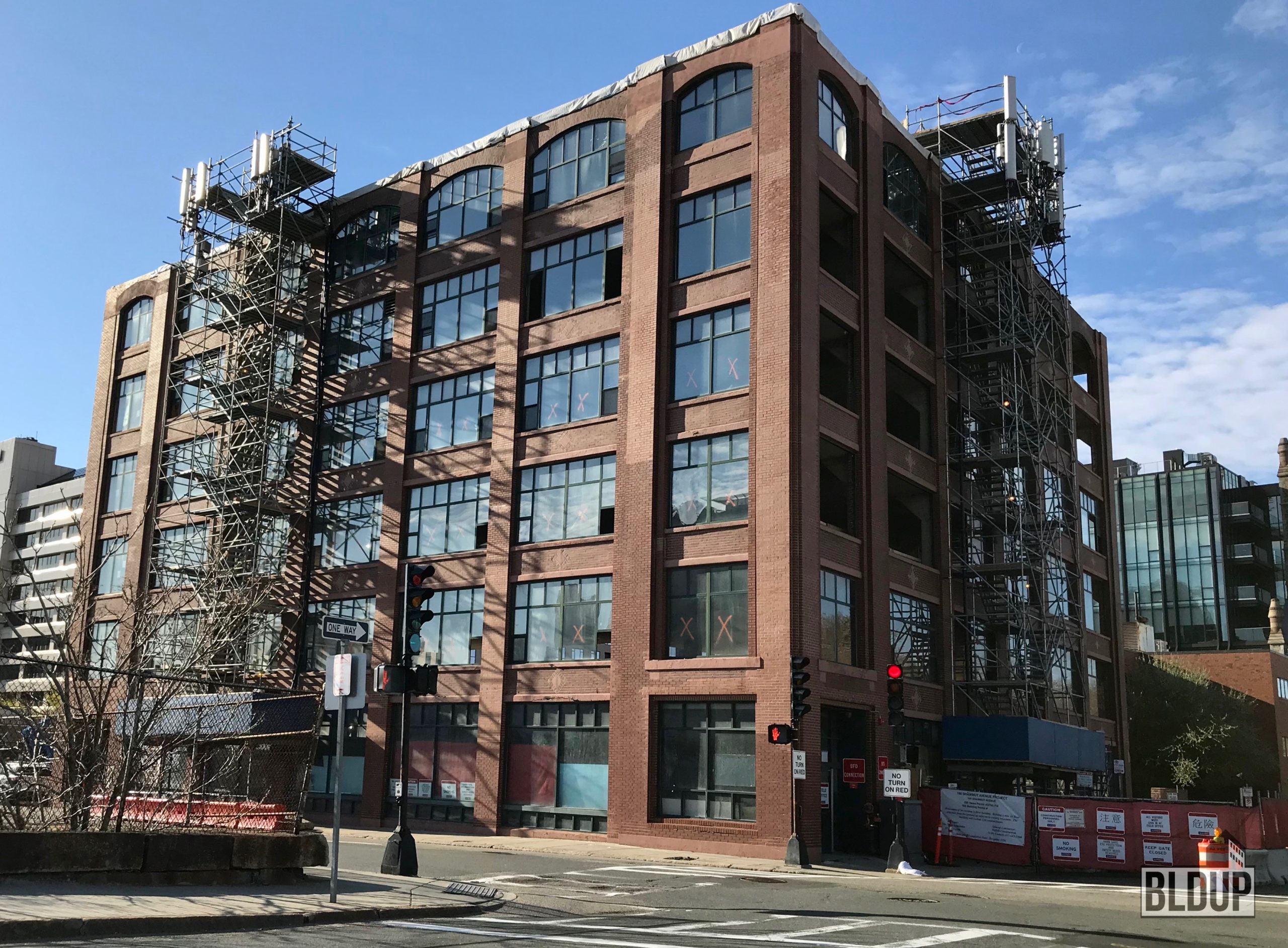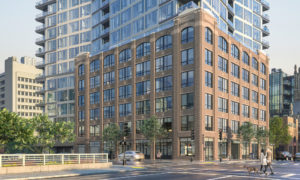
17 Mar 2022 New South End Condominium Building’s Industrial Past Revisited
Continuing from a February 26th post, here’s more on 100 Shawmut’s transformation from an industrial manufacturing site to contemporary condominiums.
Sometimes research happens at its own pace.
We wrote recently that, in the area in and around the recently developed InkBlock in Boston’s South End, only one residential building among a total of 10 new ones was retained from the neighborhood’s earlier generation of industrial commercial buildings. The Davis Companies’ development at 100 Shawmut Avenue turned a piece of Boston’s historic garment trade into 138 condominiums.
This area, half a dozen blocks lined up perpendicular to Albany Street before they were wiped out by Urban Renewal era clearance in the mid-20th century, was known as the “New York Streets” neighborhood. Now it’s a thriving new sub-neighborhood of the South End. Marta Crilly, Archivist for Research and Outreach at the Boston City Archives, kindly nailed down for us when Castle Street officially became Herald Street. That was 1959, which is also when, according to a Wall Street Journal article, the Boston Herald and Traveler moved to the area from Newspaper Row in Boston, along Washington Street.

We knew 100 Shawmut had had a colorful past, but we were stumped learning much about it other the basics: It’s where the Arthur H. Freedberg Company made men’s clothing for Jordan Marsh and other stores. 100 Shawmut was built in about 1915 as a arts and crafts-style daylit manufacturing warehouse, and Freedberg was incorporated from 1934 to 2002.
We recently had the good fortune to connect with Fred Scopa, owner of Bostonia Realty, who not only remembers going to 100 Shawmut to get Freedberg to fit him with suits, but also was involved in sales and management of the building.
Freedberg had two of the six 10,000-square-foot floor plates of the building, with administrative offices on five, along with ready-to-wear garments sold from there. On floor six, Freedberg’s employees turned out suits, jackets and pants for Jordan Marsh and other retailers. The company made bespoke suits for customers who came in on Saturdays, the rest of the week devoted to larger production.
But Freedberg shared the building with others. Harry R. Feldman, the surveyor, was on the fourth floor. His grandson, Michael, still runs the company, Feldman Geospatial, which is now on Hampden Street in a repurposed Roxbury warehouse building. The three floors below were occupied by Boston Interiors (formerly Boston Bedroom), which actually owned the building for a time. Boston Interiors corporate headquarters is now in Stoughton, and it has furniture stores in seven Boston area locations.
The Hamilton Company, run by Harold Brown, bought the building from Boston Interiors but fell on hard times and was forced to sell the building. Scopa recalled handling the sale to Action for Boston Community Development (ABCD), a nonprofit organization whose programs support low-income residents. ABCD bought the building in the 1990s for $2.1 million, and the developer of the new condos bought it a few years ago – after the Boston economy had boomed – for $26.5 million.
There’s more. Joseph Abboud, the well-known Boston tie and clothing designer, also worked at Freedberg, as well as Louis Boston on Boylston Street, before launching a distinguished brand of his own. Abboud, who grew up in the South End, later sold and re-acquired his brand, which is now affiliated with Tailored Brands Inc. (Men’s Wearhouse).
Many of those new residents at 100 Shawmut probably buy their clothes on line today. It might surprise them what went on for decades in the building they now call home.



